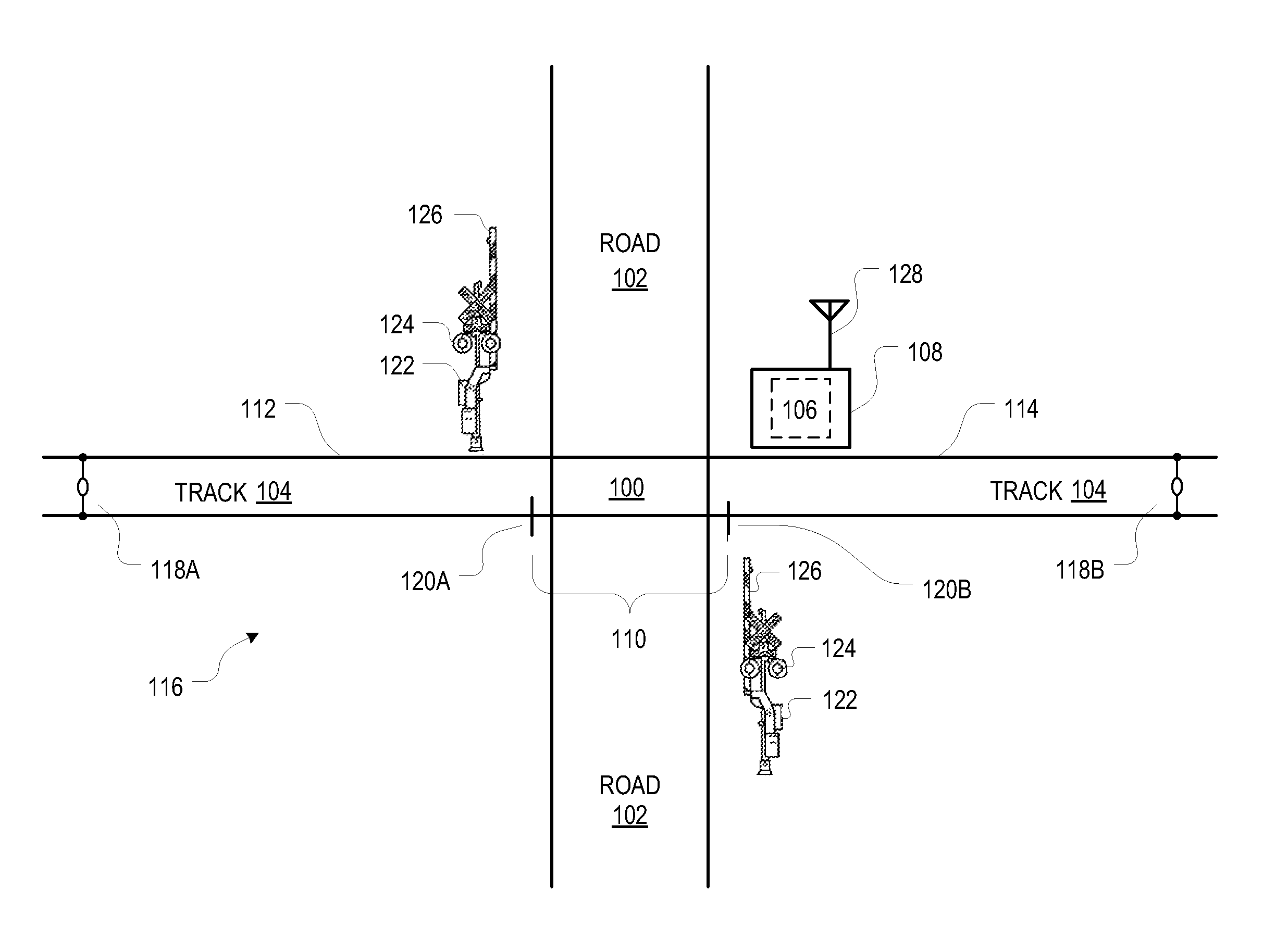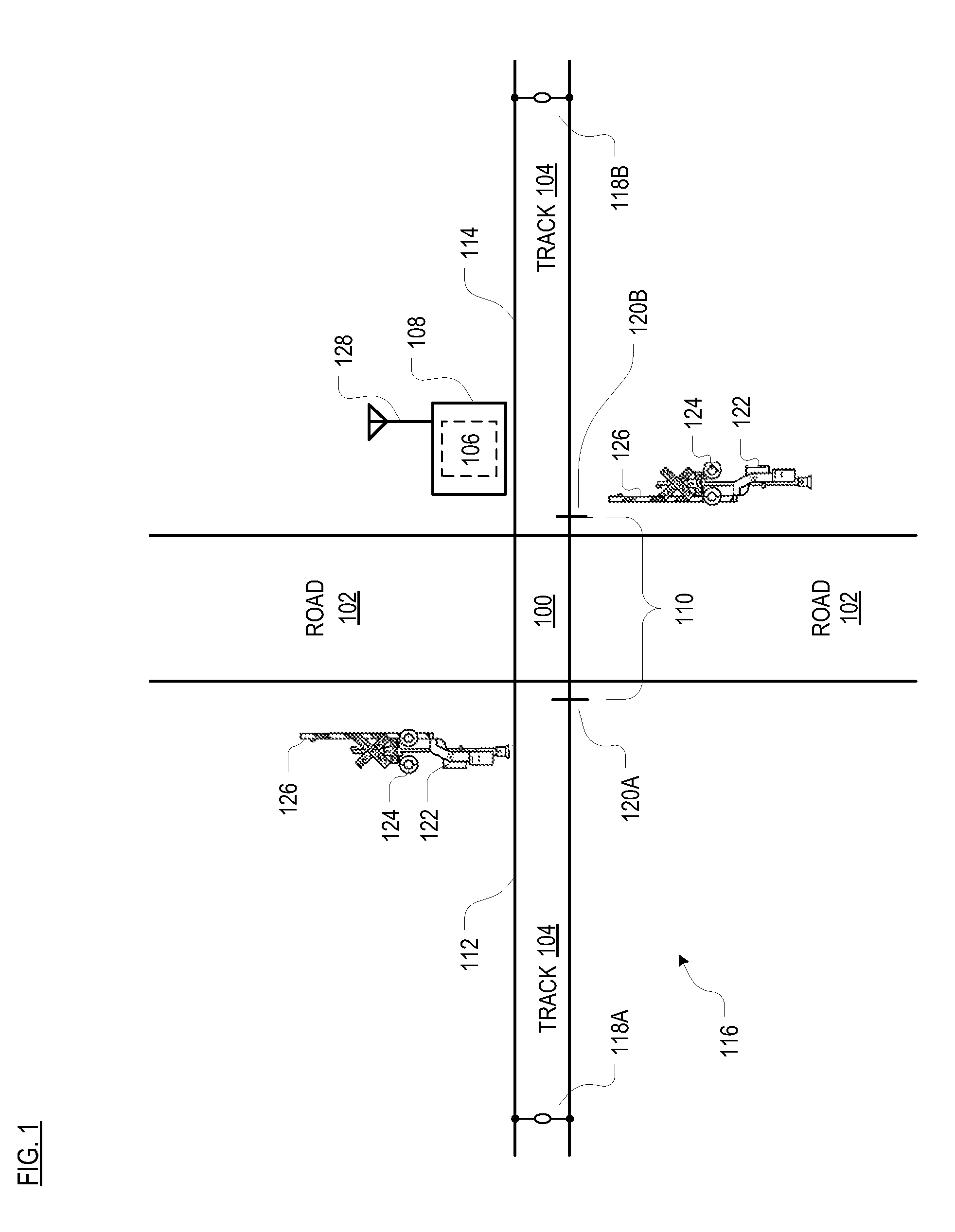System and method for train operation approaching grade crossings
a technology of grade crossing and system, applied in the railway field, can solve the problems of slowness, poor estimation of the estimated time of arrival by the controller, and inconvenient warning time, so as to improve the delay for local pedestrians
- Summary
- Abstract
- Description
- Claims
- Application Information
AI Technical Summary
Benefits of technology
Problems solved by technology
Method used
Image
Examples
Embodiment Construction
[0033]FIG. 2 depicts system 200 for crossing activation in accordance with the illustrative embodiment of the present invention. System 200 includes both onboard system 230 and wayside system 240.
[0034]In the illustrative embodiment depicted in FIG. 2, equipment included in onboard system 230 comprises:[0035]Location-determining system 232. The location-determining system is typically satellite based (e.g., GPS or DGPS, etc.) optionally enhanced by an inertial device (e.g., accelerometers, gyroscopes, etc.). The reason for the optional inclusion of inertial devices is that system 232 must be capable of dead reckoning in areas in which there is unreliable or no GPS coverage. Thus, output from one or more inertial sensors are blended with available GPS or DGPS and compared against an onboard track database to determine train location. Those skilled in the art will know how to use GPS or DGPS in conjunction with inertial sensors to determine the location of a train on a railway.[0036]T...
PUM
 Login to View More
Login to View More Abstract
Description
Claims
Application Information
 Login to View More
Login to View More - R&D
- Intellectual Property
- Life Sciences
- Materials
- Tech Scout
- Unparalleled Data Quality
- Higher Quality Content
- 60% Fewer Hallucinations
Browse by: Latest US Patents, China's latest patents, Technical Efficacy Thesaurus, Application Domain, Technology Topic, Popular Technical Reports.
© 2025 PatSnap. All rights reserved.Legal|Privacy policy|Modern Slavery Act Transparency Statement|Sitemap|About US| Contact US: help@patsnap.com



